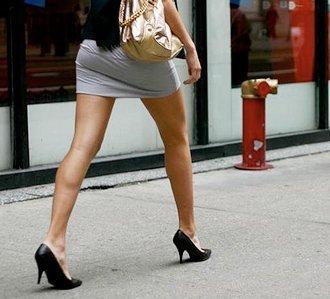原來看過一篇報道,說是女性高跟鞋的高度可以反應經濟形勢。最近又發現一個新的理論叫“裙擺指數”,說女性裙子的長度也能反應經濟形勢。裙子越短,經濟形勢越好。照這么說,現在滿大街都是短裙,咱們的經濟一定是很不錯嘍?

The Hemline Index is a theory presented by economist George Taylor in 1926. It is an idea that suggests women's hemlines fluctuate and can even indicate macroeconomic performance. The higher the hemline, the better the economy looks.
裙擺指數(hemline index)是由經濟學家喬治?泰勒在1926年推出的一種理論。這種理論認為女性裙擺長度變化能夠預測宏觀經濟的走向。裙子越短,經濟形勢越好。
The theory suggests that hemlines on women's dresses rise along with stock prices. In good economies, we get such results as miniskirts (as seen in the 1960s), or in poor economic times, as shown by the 1929 Wall Street Crash, hems can drop to the ankle almost overnight.
裙擺理論認為,女士們裙擺的長度是跟著股票價格波動的。經濟狀況好的時候,滿大街都是超短裙(比如上世紀60年代);而經濟不景氣的時候,比如1929年的華爾街大衰退,裙擺可以在一夜之間長及腳踝。
Most designers mirror that viewpoint, that the economy has little effect on what they present. But that is hard to argue, when designers almost unanimously moved to a black and neutral color palette as Lehman Brothers failed.
很多設計師都反駁這一觀點,認為經濟對他們展示的時裝風格沒有太多影響。但同時他們也承認,在萊曼兄弟破產的消息傳出后,設計師們幾乎不約而同地開始使用黑色和中性的色調。
相關閱讀
(中國日報網英語點津 Helen)